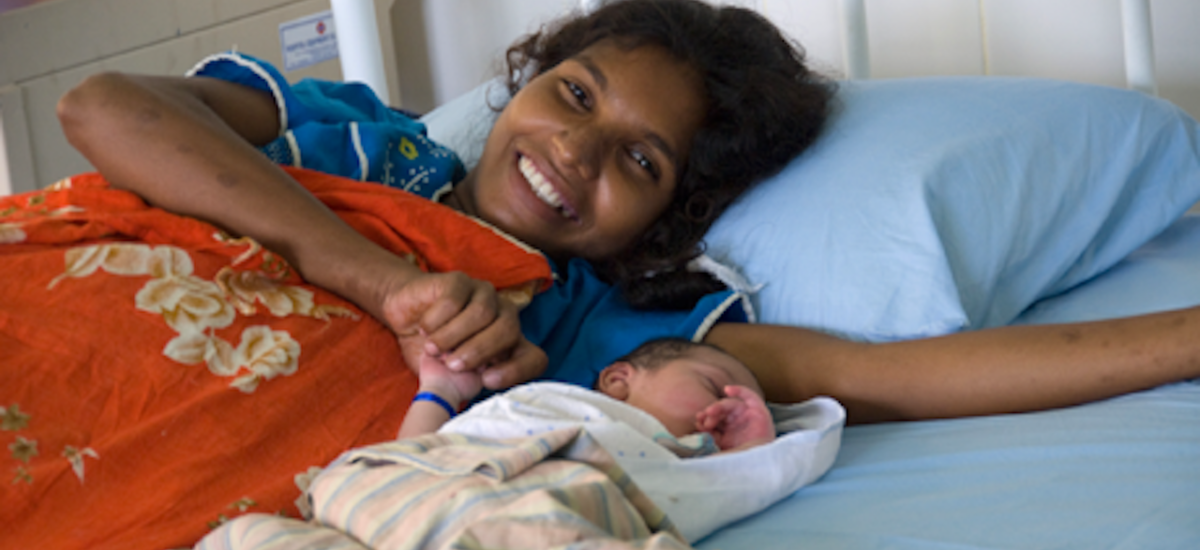Photo courtesy of UNFPA
*Sandamali is 26 weeks pregnant but she doesn’t yet know the sex of her unborn child. She lives in Bodagama with her husband and her two children, where healthcare facilities are at a bare minimum. With the nearest hospital over an hour’s distance away in Hambantota, it has been extremely challenging to make the trip to the hospital to even get the scan done. The one hour commute is tiring enough but coupled with the fear of the ongoing COVID-19 pandemic and the travel restrictions in place, Sandamali and many other women have had almost no access to essential family planning services or life-saving obstetric and gynecological care.
“This virus has made me scared, not just for my two children but for my baby because if anything happens I don’t have any access to a hospital,” she says.
She is not alone. Around the world, the pandemic has affected women’s access to family planning information and services, particularly in low income countries and marginalised communities.
The impact of COVID-19 on vulnerable communities
The COVID-19 virus is the greatest public health crisis the world has seen in the recent past. Two years into the pandemic, despite governments’ best attempts to respond to the pandemic, there is much more that needs to be done in an ever evolving situation. One thing however remains common; the socio-economic impact of the pandemic can be seen far and wide, increasing global poverty and compounding existing inequities – shocks that are likely to be long lasting. Millions have lost jobs and as a result, access to education, healthcare and social security systems as well. Individuals from all walks of life have been afflicted with economic uncertainty causing increased burden and psychological stress within families.
Women and girls have especially been hit hard by the pandemic. These days, Sandamali has a lot on her mind. The pandemic forced her husband to close their family business. They invested years of effort into a restaurant which accounted for all their income. But today the kitchen is shut and there are no customers. “We have no savings now,” says Sandamali, adding that her family has fallen through the cracks and been overlooked by government programmes designed to support the poor. “We were also not selected as Samurdhi beneficiaries and we did not even get the Rs. 5,000 that some families received.”
COVID-19 and fertility trends
As the debt burden increases within family units, governments across the world are also feeling the heat to race to respond to the pandemic – many of them forced to redirect resources allocated for family planning and sexual and reproductive healthcare services and facilities. The costs are being borne by the most vulnerable women and girls spiking unplanned pregnancies in several of the countries in the global south in particular. Motherhood is no longer a choice for these women.
Collectively, these individual hardships have the potential to reshape populations. This has driven alarmist headlines in mainstream media, stoking fears of baby booms or baby busts.
On the other hand, escalating care-giving roles and responsibilities of women have forced many with the triple burden of working long hours from home while taking care of the home chores and balancing care for older persons and children. For these women, having another baby has been the last thing on their mind.
With COVID-19 still evolving there is still limited data on fertility trends. However, looking at past crises, there is evidence to suggest that the pandemic could lead to short term fertility declines in many countries, while other poorer countries are showing signs of increased birth trends.
To mark World Population Day in July, a virtual panel discussion was held by the University of Colombo together with the United Nations Population Fund (UNFPA) which delved into the topic of fertility trends and choices in the midst of the pandemic. The virtual discussion featuring Emeritus Professor of the University of Colombo Professor Lakshman Dissanayake, Director of Maternal and Child Health of the Family Health Bureau Dr. Chithramalee de Silva, Vice President of the International Union for the Scientific Study of Population (IUSSP) Dr. Shireen Jejeebhoy, Regional Advisor on Population Ageing and Sustainable Development of the UNFPA Asia-Pacific Office Dr. Rintaro Mori, along with chief guest President of the International Union for the Scientific Study of Population, Professor Tom LeGrand, examined how Sri Lanka could ensure that sexual and reproductive health rights and bodily autonomy was prioritized in policy making as the country works towards recovering from COVID-19.
What does history tell us?
Historical data shows that high mortality events such as famines, earthquakes, heatwaves and disease are followed by lower birth rates nine months later. This decrease however is usually followed by an upsurge in fertility after the conclusion of the high mortality event. For example, in Sri Lanka when considering the number of births after the tsunami, there were 568,262 additional children under 10 in 2012 compared to the number of children at the same age in 20121. This means that 47,355 births were added annually after the tsunami in 2004. For context, the total number of deaths that occurred due to the tsunami was 36,603, meaning 15.5 additional births for one single loss of life were reported during the eight years after the tsunami2.
As the COVID-19 pandemic is still ongoing in Sri Lanka and around the world, if we assume that the pandemic will be completely controlled in Sri Lanka by the end of 2022, we may expect to see a decrease in fertility until the second half of 2023. After the second half of 2023 we may observe an upsurge in fertility due to more marriages taking place and resumption of procreation which were postponed during the pandemic.
COVID-19 and sexual and reproductive rights
COVID-19 has significantly disrupted access to sexual and reproductive service delivery, rights and choices in Sri Lanka and across the world. The disruption to family planning services in particular has left vulnerable populations at risk of unintended pregnancies amid economic strains and uncertainty. The Family Health Bureau under the Ministry of Health ,which leads Sri Lanka’s sexual and reproductive service delivery, has seen significant impact to its programmes due to the pandemic.
However, the institution is adapting to the evolving situation and has developed a rights based approach to caring for target groups including women like Sandamali with limited access to services due to the pandemic that includes family planning services and nutrition supplementation and post-partum care continued as routine, a high risk approach in antenatal care, growth monitoring and immunization services, community awareness on COVID-19 and person protective measures, extended support to contact tracing and the pregnancy record being accepted as a curfew pass among others.
Apart from expectant mothers the pandemic has also impacted several domains of the lives of adolescents including schooling, livelihoods and use of time, child and early marriage, mental health, spurts in violence including new forms of violence and sexual and reproductive health and rights. Existing disadvantages have been amplified especially for adolescent girls. Girls in particular are more likely to drop out of school and face greater risk of unplanned pregnancies. For them the pandemic may have long lasting effects. In light of these challenges the Family Health Bureau’s re-orientation of care around COVID-19 at the grass root level is ongoing with support from UNFPA with procurement of digital equipment, personal protective equipment, transferring services to a digital sphere, conducting virtual education sessions for young people, production of digital training material and so on.
During the pandemic, disruptions in sexual and reproductive health services have been exacerbated in places where these services are not considered essential. The key aspects of COVID-19 for fertility include access to family planning, gender roles and division of domestic labour and the economic recession and uncertainty. Policies therefore should aim to (1) address barriers in access to family planning by designating sexual and reproductive health services an essential service and ensuring supply chains continue, (2) address unequal gender division of domestic labour by ensuring parental leave, flexible working arrangements and accessible quality childcare and (3) mitigate the effects of the economic recession and provide financial incentives for couples considering having children. The response to COVID-19 offers a unique opportunity to recognise and address key barriers to fertility choices by introducing rights based, people based and evidence based family policies that are respectful of individual reproductive rights and diverse preferences.
Demographic changes can also offer opportunities and must be addressed holistically, for example, Sri Lanka has the fastest growing ageing population in South Asia and it is projected that by 2030, one in five Sri Lankans will be over the age of 60 with the majority being women, thus bringing about unique challenges and opportunities that the country must be prepared for especially in the context of emergency preparedness.
Ultimately, the best way to address fertility change is to support the human rights and welfare of all people and to ensure that all women and couples have access to information and the health care services including family planning services to exercise their fertility decisions and reproductive rights.
*Name has been changed for confidentiality.
- Dissanayake, Lakshman (2016) Recent Fertility Dynamics in Sri Lanka, 2016, Sri Lankan Journal of Population Studies, Population Association of Sri Lanka
- Dissanayake, Lakshman (2017) Illogicalities between contraceptive use and recent fertility dynamics in Sri Lanka, Colombo Arts: Journal of Social Sciences and Humanities, 2(1): 1-11


